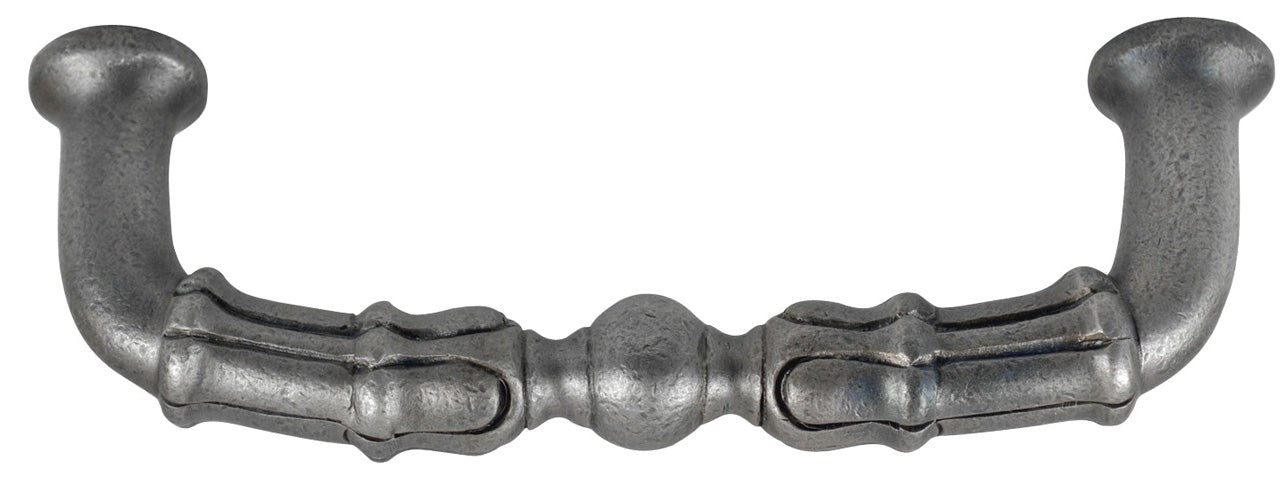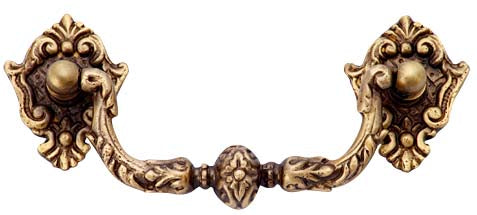Victorian Furniture

Victorian Furniture and Hardware for an Era of Passion and Prosperity
Antique Victorian furniture was crafted between approximately 1837 and 1901, and it reflected a prosperous time that was also full of secret passion. Some of the greatest English poets wrote during this time period, like Alfred Lord Tennyson and the romantic Robert Browning. The passion and correctness of this period are reflected in the furniture built during these years. Passion is found in the ornamentation, while correctness is found in the well-balanced, orderly, and sometimes heavy-looking, style. Victorian furniture designers and builders were master craftsmen, and that is precisely why there are so many original pieces still around. This furniture was built to last.
|
|
|
|
 |
 |
 |
Royal Beginnings
Victorian furniture was named after the popular Queen Victoria who ruled England during the years mentioned. It was during this period that England saw the Industrial Revolution and the start of mass production. This led to what is known as the Arts and Crafts Movement, which opposed the cheapening of products once crafted with care and now mass produced with lower quality. Started by William Morris, this was a profound movement beginning around 1880 that promoted new designs and ideas in decorative arts. Out of this movement emerged styles like Art Nouveau and Gothic Revivalism. Later Victorian furniture can be said to be a combination of the stately style of the Georgian period combined with the creative ornamentation of the various styles that followed.
|
|
|
|
 |
 |
 |
Victorian furniture is characterized by its heavy carvings, ornate motifs, barley twist framing, and lots of leather panelling. Victorian furniture is an eclectic mix of two-drawer over three-drawer cabinets, carved columns, wood crossbanding, and shaped bracket feet. It is common to find pieces that clearly combine two different styles like Georgian and Victorian. Early furniture included the very uncomfortable horsehair sofas, but softer fabrics were eventually substituted.
|
|
|
|
 |
 |
 |
Perfectly Adaptable To The Times
Since Victorian furniture represented a revival of quality craftsmanship, the original English furniture was mostly made of beautiful woods like mahogany, oak and walnut. As time passed and these woods became more expensive, pine and oak became the standard wood choices, and walnut and mahogany veneers were used. These are not veneers like the thin furniture veneers we are familiar with today. The original Victorian veneers reflected quality craftsmanship. Victorian furniture is usually dark and shiny. Victorian furniture did take advantage of mass production though. Machine turned legs were common, for example. Plenty of Victorian furniture was mass produced also, but the quality was controlled by the craftsmen.
In the United States, factory made furniture in Victorian style was also produced during this time period. For example, spool furniture was made between 1850 and 1865 which had straight pieces turned on a machine. Made out of birch or maple or other local hardwoods, the furniture would be stained to resemble the original dark hardwoods of English Victorian furniture.
|
|
|
|
 |
 |
 |
Victorian furniture includes the whatnot, china cabinet, the Morris chair, rocking chairs, sofas, bed headboards, bureaus, dressing tables, chiffoniers, dining room tables, heavy sofas and much more. Since most houses during this period had very large rooms and high ceilings, Victorian furniture tended to be large and tall.
Like many of the homes and grand buildings that were built during the same time period, the Victorian hardware has a distinctive classical style.
|
|
|
 |
 |
Replacement Hardware Fit For A Queen (or King)
Victorian furniture is still replicated today. Even modern style furniture uses replicas of hardware and ornamentation that was original on Victorian furniture.
Typical Victorian hardware was mostly solid brass. The swan neck style pulls were popular. However, since the Victorian furniture blended so many different styles, a variety of hardware was used on the original furniture. This hardware includes items like ornate cast bright brass drawer escutcheons, Rococo brass knobs, and antique finish keyhole covers. Restorations or repairs to old or new Victorian furniture may require replacing Victorian dry sink or pie safe catches, which are still made so you can preserve the Victorian style. Cabinets use exterior door catches which are manufactured in bright brass or decorative brass. Other types of Victorian hardware include loose pin wrought iron hinges and carved wood handles and pulls reminiscent of the ornamentation typifying Victorian furniture.
Perfectly Adaptable To The Times
The types of Victorian hardware that typically need to be replaced include:
• Swan Neck Style Pulls and Knobs
• Bright Brass Ring Pulls
• Brigth Brass Round Knobs
• Exterior Door Catches in Polished Brass
• Bright Brass Nouveau or Rococo Styles
• Fancy Escutcheons or Key Hole Covers
In fact, the nice feature of Victorian furniture is that you have many hardware options that perfectly suit the style. In other words, you can’t go wrong no matter what type of period hardware you choose.
|
|
|
 |
 |























